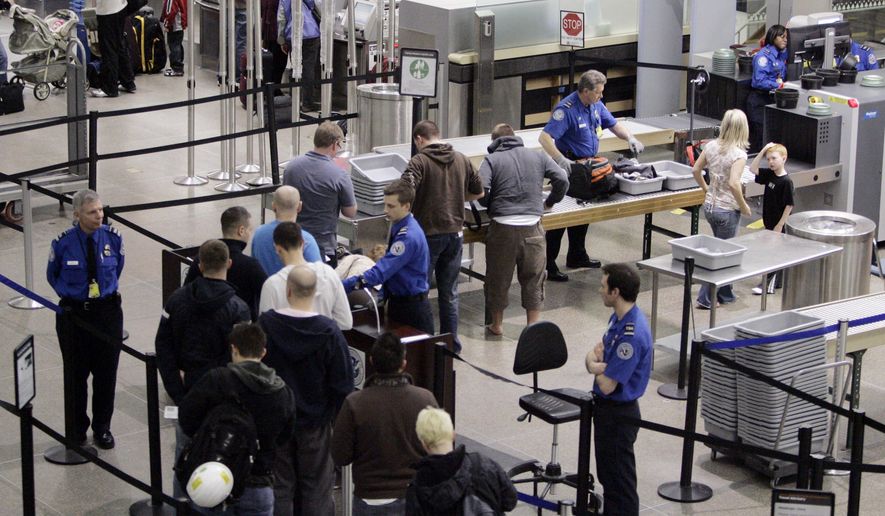OPINION:
Wishing someone “safe travels” shouldn’t be more than a good manners. With the exposure of vulnerabilities posed by airport screeners, who are largely responsible for getting American passengers safely from Point A to Point B, passengers have no choice but to fly “on a wing and a prayer.” Flunking tests to detect fake bombs and weapons at security checkpoints, the Transportation Security Administration (TSA) is proved unable to guarantee safety at the nation’s airports. An overhaul of the way the government protects travelers is in order.
An audit by John Roth, the inspector general of the Department of Homeland Security, reveals that a test screening by the TSA failed to identify 73 workers in violation of “terrorism-related security codes.” That’s government-speak for a red flag in a worker’s background, such as a criminal conviction or a lack of legal status in the United States. These are people employed by an airline, airport vendors or others who “were cleared for access to secure airport areas despite representing a potential transportation security threat.”
The inspector general reported that from nearly 1 million persons vetted, the agency referred more than 300 to the watch list and denied credentials to another 4,800 who couldn’t prove they were lawfully in the United States. Finding a needle in a haystack is hard work, but missing 73 potential terrorists could mean more pain than a pinprick. Only one terrorist could plant a bomb to bring down an airliner.
The breakdown occurred, according to the inspector general, because the TSA does not have access to complete terrorism information and the agency relies on airports to conduct criminal background checks. Some airports are more efficient than others. The Department of Homeland Security, of which TSA is a part, was created following Sept. 11, 2001 by merging 22 agencies to “develop and coordinate the implementation of a comprehensive national strategy to secure the United States from terrorist threats or attacks.” “Comprehensive” has come to mean “unwieldy” in a bureaucracy of 216,000 employees.
The inspector general’s disturbing report follows the announcement last week that the TSA, tasked with screening and patting down passengers, failed to spot fake explosives and weapons in an astonishing 95 percent of the time. A blind pig is more efficient at finding acorns. This revelation is frightening to the traveling public and demoralizing to the screeners themselves.
“The problems we face are much worse than the public realizes,” says Sen. Ben Sasse, Nebraska Republican, a member of the Senate Homeland Security Committee and Governmental Affairs. Inspector General Roth testified that spending a lot of money on security hasn’t produced effective screening. “Despite spending billions on aviation security technology, our testing of certain systems has revealed no resulting improvement,” he said.
In the business world, nonperformers are shown to the door without ceremony. In government, they’re merely “reassigned,” as TSA Acting Director Melvin Carraway was, after the weapons test results were made public. With its reputation in free fall, the agency should be reorganized or shut down. Congress could begin an overhaul by enabling innovators to compete against the TSA to establish the airtight airport. Since “God helps those who help themselves,” as children once learned in the classroom, prayers shouldn’t be the first line of defense against the wicked who threaten the safety of the skies.




Please read our comment policy before commenting.